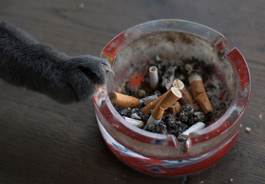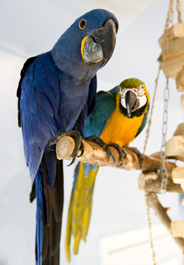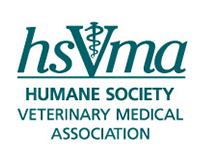Secondhand Smoke Harms Pets and Wildlifeby Alexandra Swanson, DVM October 18, 2013  iStockphoto As veterinary professionals, we should look at animal health and client health in a holistic manner, essentially, from a One Health perspective. The expression, "what is good for the goose is good for the gander" comes to mind. What is good for the pet-owning public also holds true for what is good for those pets of whom we are guardians. Humane treatment of animals should be expanded to include educational outreach to pet owners about the deadly harm inflicted on animals from secondhand smoke (inhalation) and thirdhand smoke (toxic residue on the fur and feathers, carpet, and bedding). Environmental Tobacco Smoke is also another term that is sometimes used. EvidenceThere is a vast amount of research documenting the harm of firsthand and secondhand smoke on people; it should not be surprising to learn that the same holds true for animals. Take cigarette and tobacco products, for instance: The residue from cigarette smoke can be re-aerosolized into the air to produce what is referred to as thirdhand smoke, posing a danger to both people and pets1. The cigarette and tobacco residue which settles on the fur and feathers of animals are ingested when birds preen or pets groom themselves. If aquariums are indoors, the toxic residue from cigarettes and tobacco products settles into the tanks, poisoning the water environment of the fish. Nicotine and ammonia are highly toxic to goldfish. Individuals with tobacco- and nicotine-stained fingers can unintentionally kill their fish by inserting their hands into aquarium water2. Babies and toddlers, just like pets, are also at considerable risk if they come in contact with the clothing of a smoker or lie down on a carpet or bed where toxic residue, known as carcinogenic TSNAs (tobacco-specific nitrosamines), have accumulated3. The literature has shown that cats exposed to secondhand smoke are three times more likely to develop lymphoma4. Cats are more prone to getting feline oral squamous cell carcinoma due to their fastidious grooming behavior5. Feline veterinarians, like Dr. Tracy McFarland, are familiar with the tragic consequences of asthma-related diseases seen in patients who live in smoke-filled households. On her website she writes: "While cigarette smoke isn't the only cause of asthma in cats, it is a common cause. Some of the most severe cases of asthma I've seen were cigarette smoke-induced, and sadly, a few cases were fatal, despite my best efforts. I have seen too many cases of lung cancer in pets living with smokers"6. Chronic obstructive pulmonary disease in cats is also well documented in the literature7. The literature has also shown that different species have different risk factors, as do different breed conformations. Colorado State University found a higher incidence of nasal cancer in dolichocephalic (long-nosed) breeds exposed to secondhand smoke, compared to those breeds in non-smoking households8.9. Short-nosed breeds are more prone to lung cancer than nasal cancer. Cancer-causing agents have been found in the fur and urine of dogs following exposure to secondhand smoke. Like humans, pets can acquire respiratory infections and asthma from secondhand smoke. An article published in the Southern California Veterinary Medical Association reaffirmed secondhand smoke as one of the common causes of chronic bronchitis in dogs10. And birds, such as psittacines, are at risk of atherosclerosis due to regular exposure to smoke11. We have all seen the cigarette butt waste in our parks, on our sidewalks, and on our beaches. Inquisitive children and pets are at risk of accidental ingestion of this waste12. Just two cigarettes ingested by a puppy can be lethal. Cigarette butt litter not only contaminates our environment, but also endangers wildlife as well as our four-legged family members who may inhale or accidentally ingest these toxic products13. Cigarette butt litter is the most common type of litter collected along beaches. Unfortunately, wildlife such as fish, birds, whales, and other marine mammals, have fallen victim to ingestion of cigarette butt litter, as evidenced by necropsies of stomach contents14.  Pet birds, like these parrots, are also sensitive to smoke. Michelle Riley/The HSUS The StatsAccording to the Coalition for a Tobacco Free Los Angeles County, tobacco use in Los Angeles County is "directly linked to the top five causes of death. This includes coronary heart disease, stroke, respiratory cancer, pneumonia, and emphysema. One of six human deaths is attributed to a tobacco-related disease in Los Angeles County at a cost of $2.3 billion"15. We do not have comparable figures on pets, but with an estimated 4.5 million cats and dogs in Los Angeles County, there are probably a sizable number of pets being exposed. Pet Owner AttitudesTobacco Control published a report in 2009 titled, "Pet Owners' Attitudes and Behaviors Related to Smoking and Secondhand Smoke: A Pilot Study"16. It was a web-based survey of 3,293 adult pet owners to evaluate smoking behavior at home and the impact of providing information on how secondhand smoke could harm pets. Twenty-one percent of surveyed respondents were smokers and 27% of respondents lived with at least one smoker. The study showed that information on the dangers of pet exposure to secondhand smoke would motivate 28.4% smokers to quit, 8.7% non-smokers to ask smokers whom they live with to quit, and 14.2% non-smokers to ask smokers not to smoke indoors. The study also showed that non-smoking pet owners who live with smokers would ask them to quit (16.4%) or to not smoke indoors (24.2%) if given this information. About 40% of smokers and 24% of non-smokers living with smokers indicated they were interested in more information on smoking, quitting, or secondhand smoke. What about Alternative and Emerging Products?There is some confusion and there are some false claims about emerging products, like electronic cigarettes (e-cigarettes). To date, there is no data to prove e-cigarettes are a safe alternative to traditional cigarettes nor have these products been approved by the FDA as a safe alternative to smoking. In fact, there was a recent case of a toddler who died after ingesting the liquid nicotine from an e-cigarette canister17. The e-cigarette vapor is made up of ingredients found in antifreeze18. Naturally, pets and wildlife could be put at risk if they encounter these discarded products. This is an Animal Welfare IssueSmoking already is a human and environmental welfare issue; we should also embrace this as an animal welfare issue. Cigarettes can cause house fires that are deadly, not just to people, but to pets as well. Cigarettes have also started forest fires that have killed wildlife and destroyed habitats. A study conducted at UC Davis showed that smoking is a leading cause of fire disaster and death worldwide, costing over $27 billion yearly19. Veterinarians and veterinary technicians who are reading this column, I encourage you to incorporate the topic of secondhand smoke into your medical history-taking. Ask your clients, "Does anyone in your household smoke? And if so, does anyone smoke around your pets?" Let them know there are excellent resources available like the California Smokers' Helpline to help people stop smoking20. Educational materials (postcards and brochures) can also be ordered through tobaccofreecatalog.org, and distributed to clients to help educate them on the facts. Help them understand they are putting all their family members, including their pets, at risk by smoking around them. Let us start the conversation and together, as animal welfare advocates and veterinary professionals, take a leadership role in raising awareness and educating the public on the benefits of a smoke-free lifestyle. Smokers' Helpline Resources

Dr. Alexandra Swanson is a DVM graduate of Western University of Health Science's charter class of 2007. She has an interesting and varied career background including a Bachelor of Science degree in Aeronautical Engineering, and is strongly devoted to animal welfare issues as they relate to veterinary public health and animal disaster preparedness. Her special interest is in helping to bring awareness about the harm of secondhand smoke to pets and people alike. REFERENCES
|
